Abstract
1 Release of noradrenaline (NA) from isolated spleen slices of the cat by high K+ and tetraethylammonium (TEA) was investigated. Studies were conducted with spleen slices whose tissue stores were prelabelled with [3H]-noradrenaline ([3H]-NA).
2 Release by high K+ was related to the K+ concentration of the incubation medium. Release of [3H]-NA by 28.5 mM K+ was only barely detectable over the background, while 70 mM K+ enhanced release to more than 600% of the background output. Tetrodotoxin (TTX) did not block responses to 28.5 or 35 mM K+.
3 Background release was not modified by 1 or 3 mM TEA, but 10 and 30 mM TEA enhanced the release of [3H]-NA by about 50% and 150%, respectively, over the background level. Neither TTX nor hexamethonium (C6) blocked the TEA response. Release by TEA was also not blocked in Ca2+-free medium or in Ca2+-free medium containing up to 3 mM EGTA. Release by TEA was blocked in Ca2+—free medium containing 5 mM EGTA, and by La3+ or Mn2+.
4 The response to 35 mM K+ was not modified by 1 or 3 mM TEA; 10 mM TEA had an additive effect; and 30 mM TEA with 35 mM K+ produced a response which was greater than the simple sum of responses to 35 mM K+ and 30 mM TEA. At 45 mM K+, 3 and 10 mM TEA potentiated the response, and at 30 mM K+ only 1 mM TEA showed potentiation. TTX did not alter the response to high K+ plus TEA.
5 When TEA (30 mM) was added during prolonged incubation with 140 mM K+, the response was only slightly enhanced. This suggests that a large part of the secretory response to TEA is mediated through mobilization of Ca2+ activated by depolarization.
6 Phenoxybenzamine (3.3 μM) potentiated responses to 35 and 140 mM K+ by about 50%, and TTX did not influence this potentiation. Acetylcholine (ACh) blocked responses to 28.5 and 35 mM K+, and 1 mM TEA antagonized this ACh blockade.
7 In the perfused adrenal gland of the cat, the secretory response to TEA was related to its concentration. The response was not diminished by low Na+, TTX, or C6, but was markedly attenuated when TEA was applied 10 min after the start of perfusion with high K+.
Full text
PDF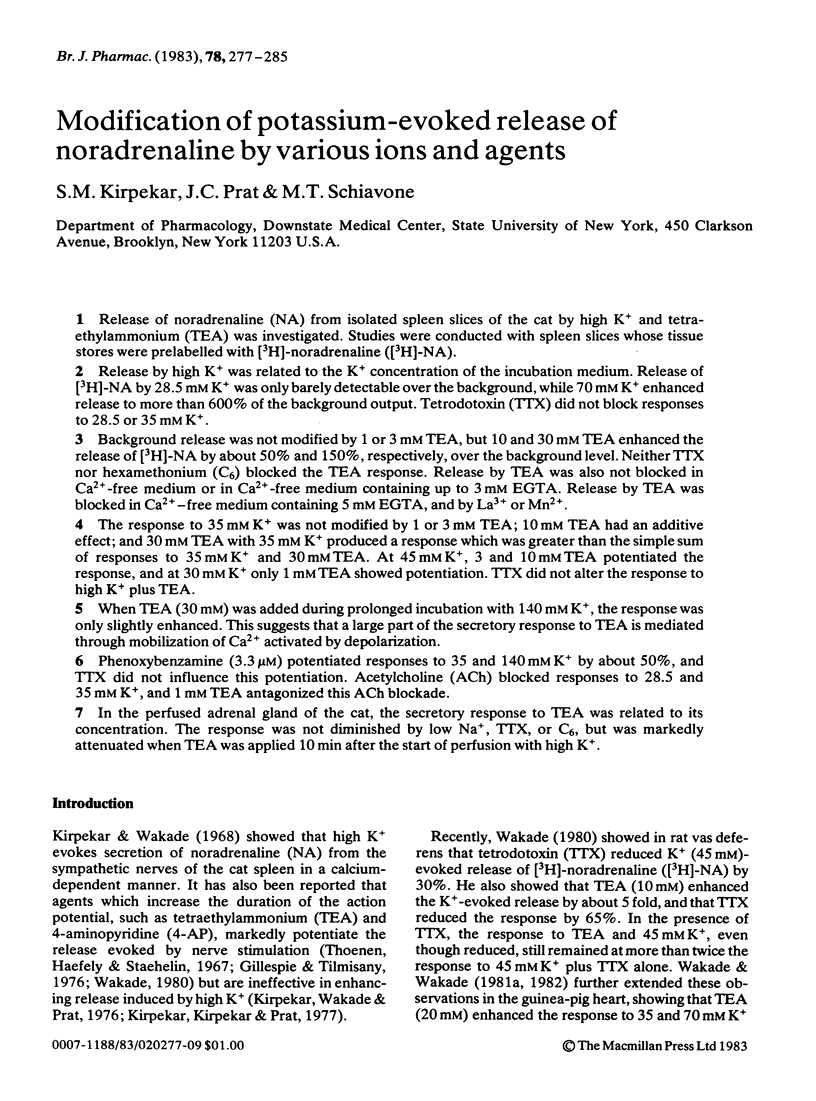
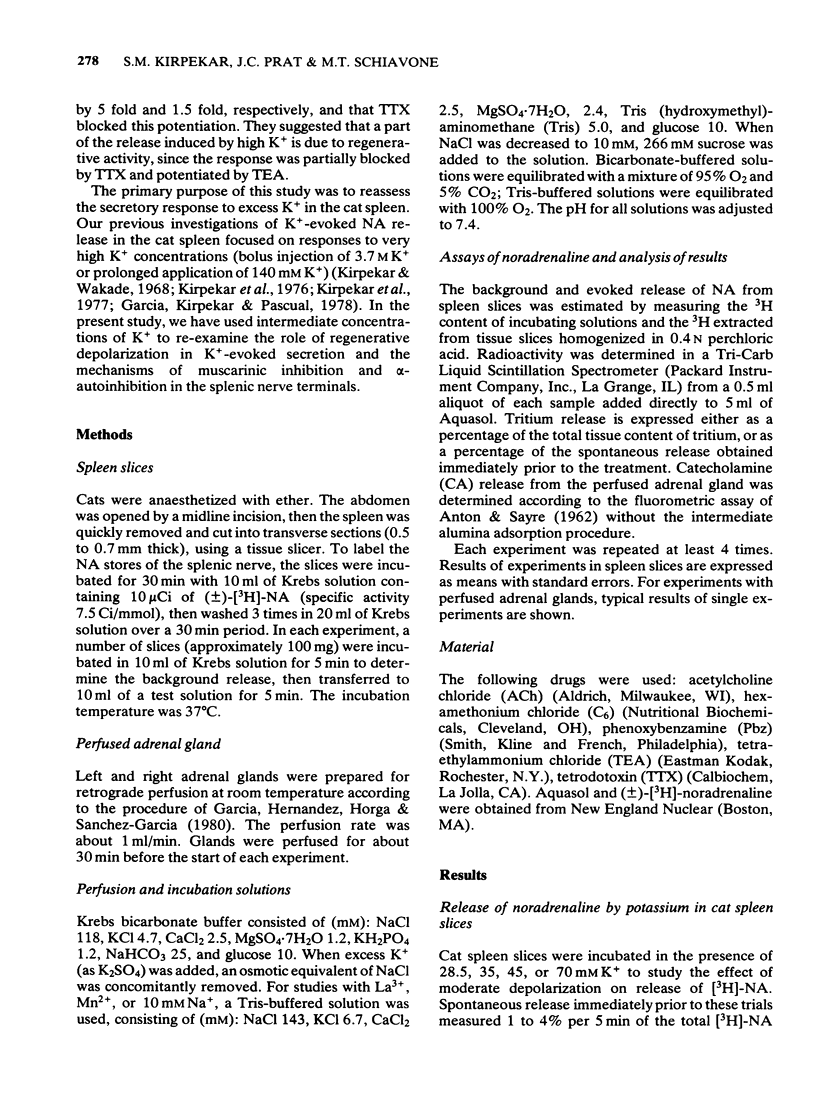
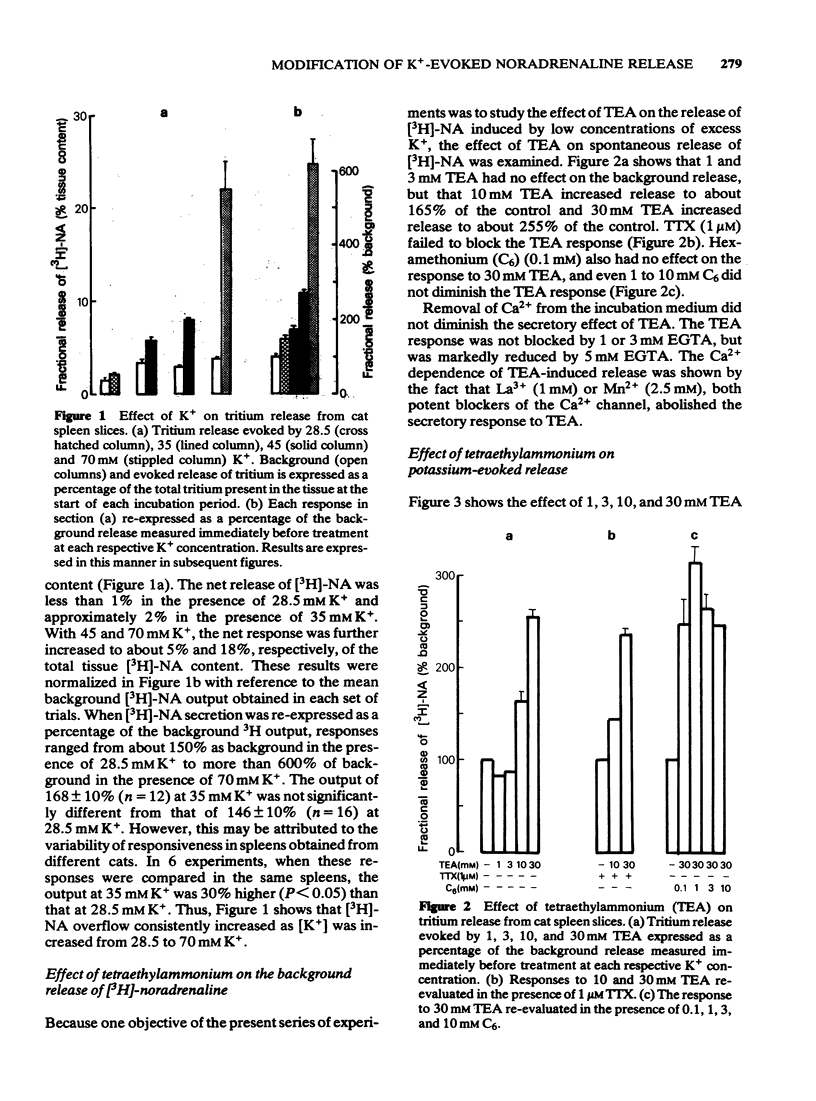

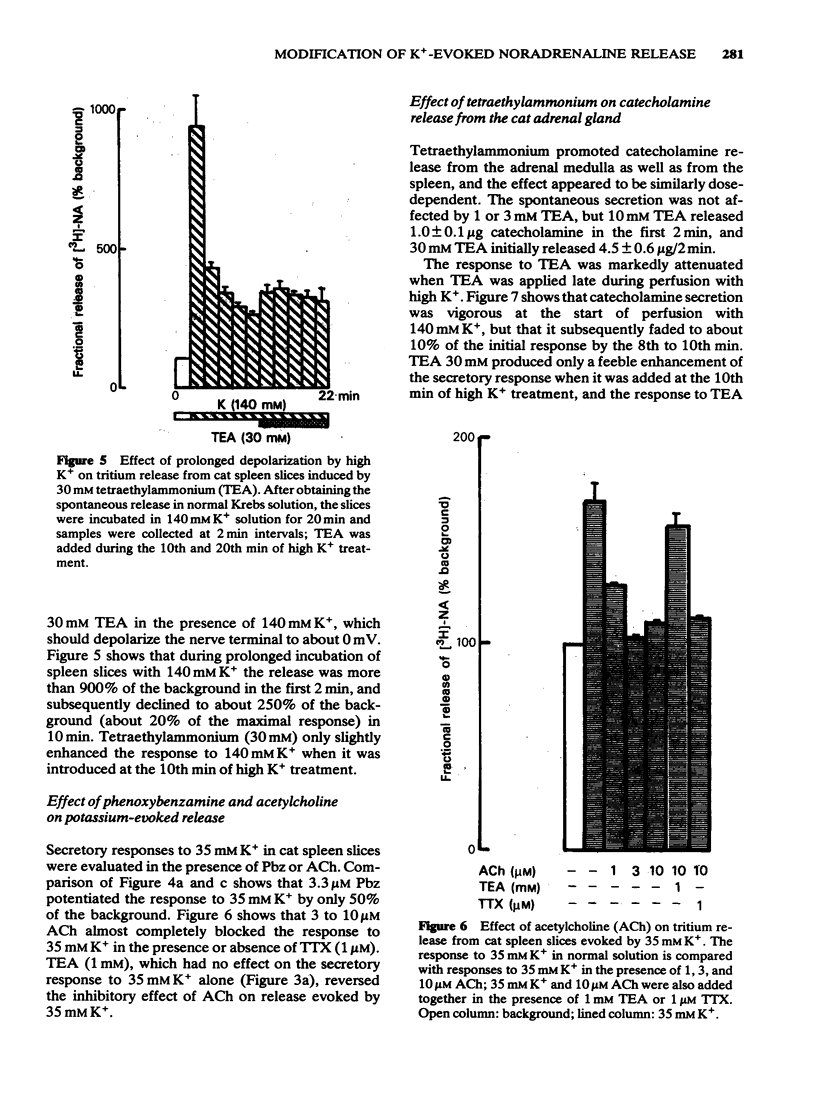
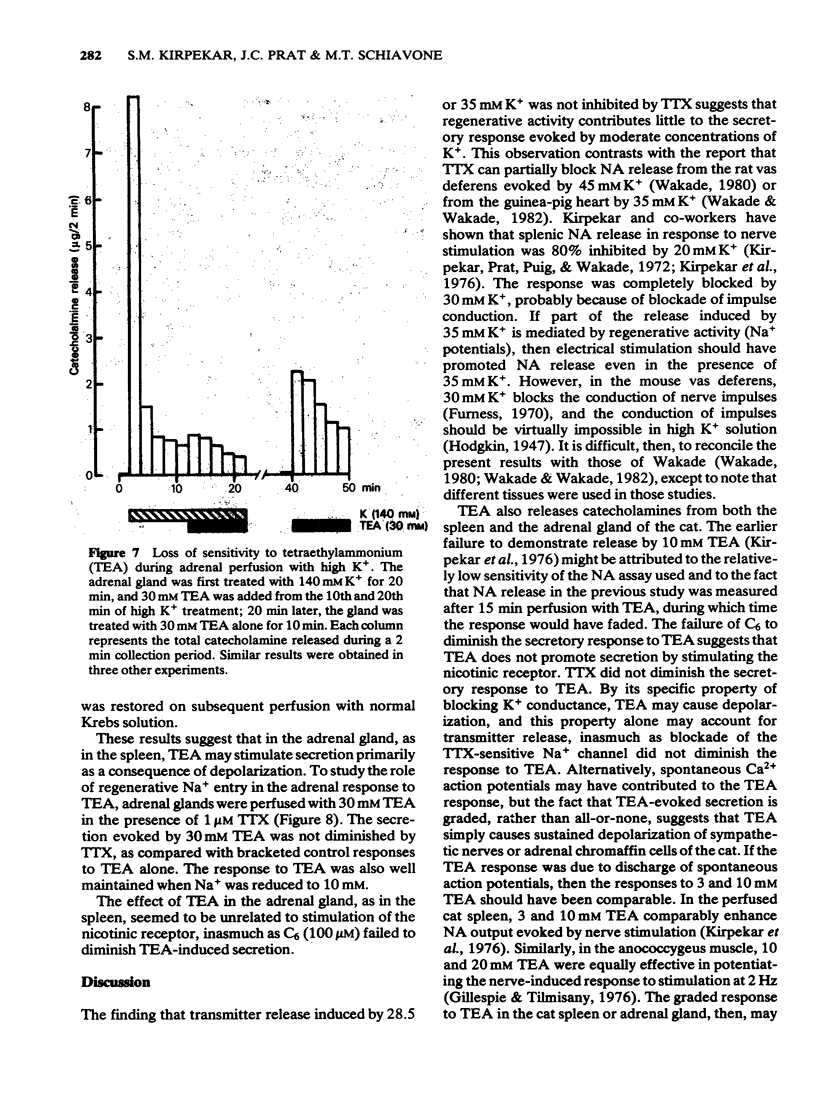
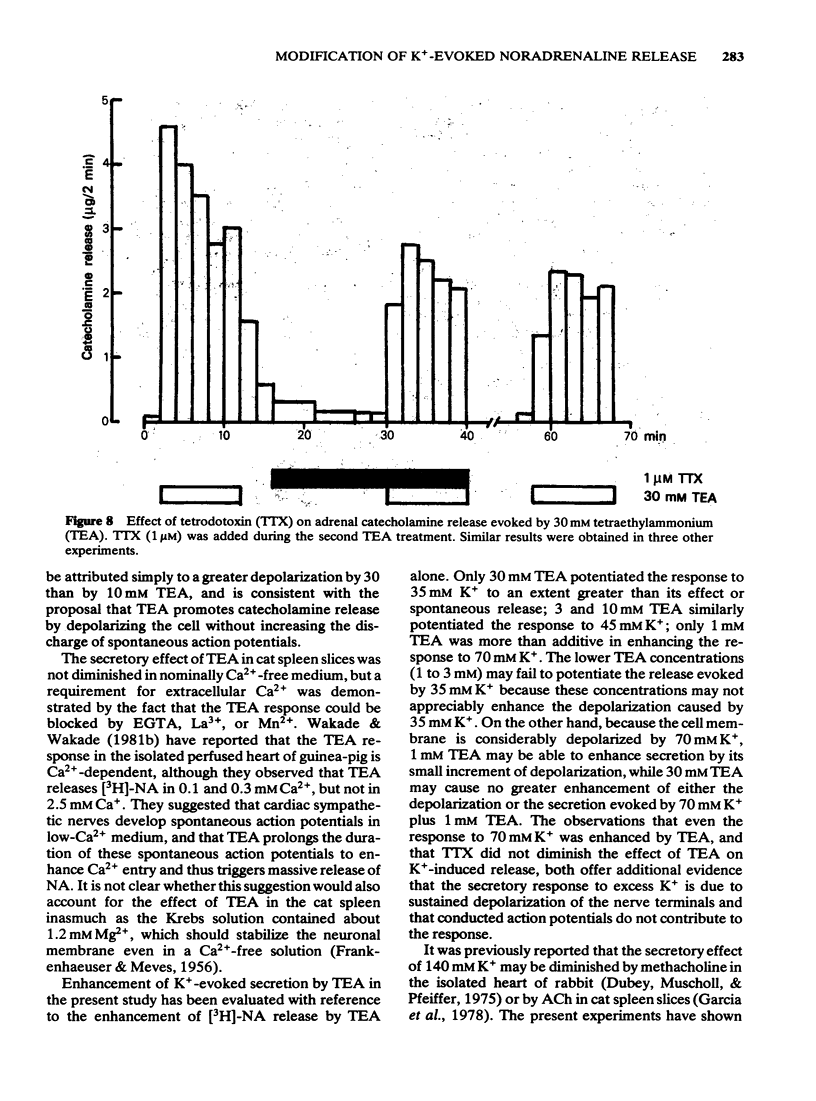
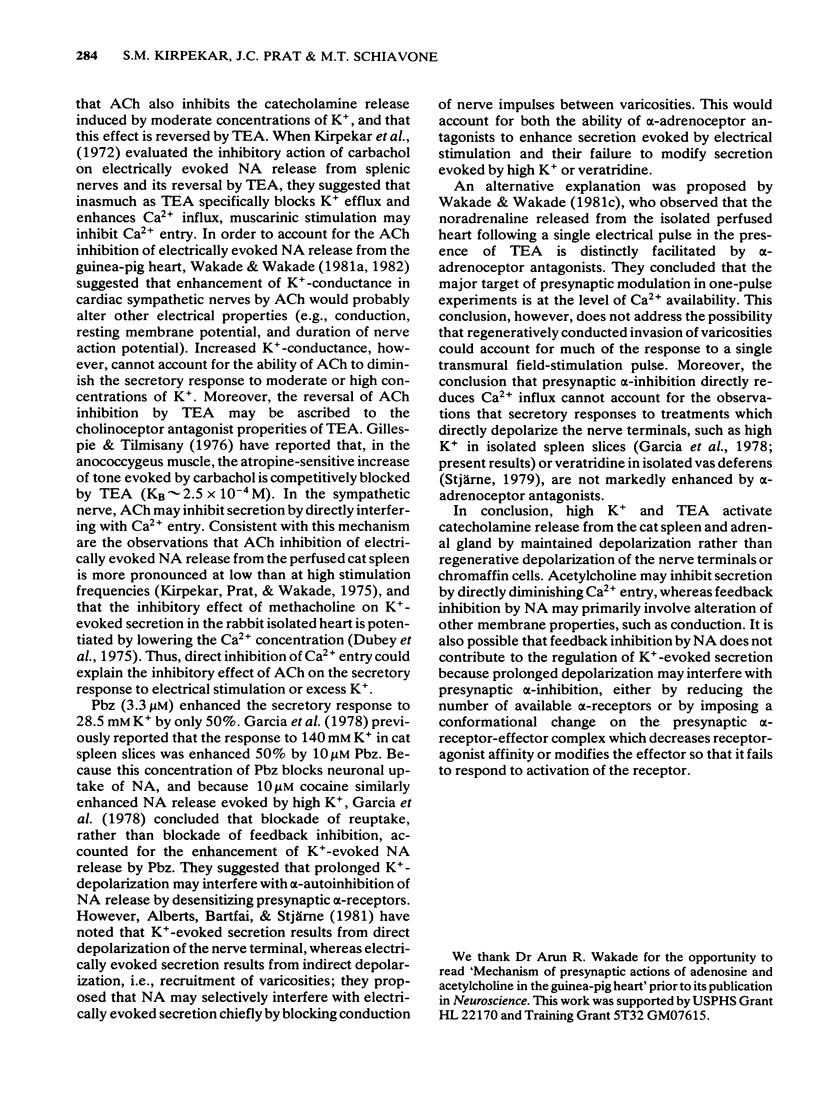
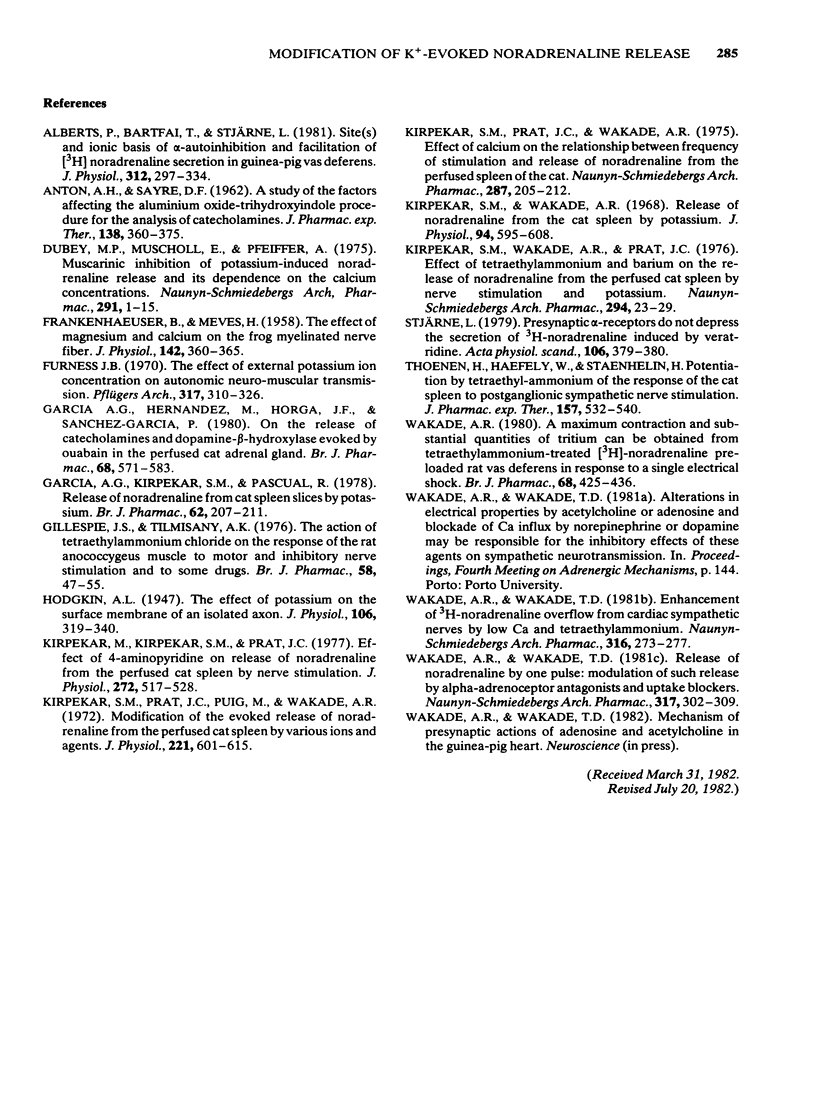
Selected References
These references are in PubMed. This may not be the complete list of references from this article.
- ANTON A. H., SAYRE D. F. A study of the factors affecting the aluminum oxide-trihydroxyindole procedure for the analysis of catecholamines. J Pharmacol Exp Ther. 1962 Dec;138:360–375. [PubMed] [Google Scholar]
- Alberts P., Bartfai T., Stjärne L. Site(s) and ionic basis of alpha-autoinhibition and facilitation of "3H'noradrenaline secretion in guinea-pig vas deferens. J Physiol. 1981 Mar;312:297–334. doi: 10.1113/jphysiol.1981.sp013630. [DOI] [PMC free article] [PubMed] [Google Scholar]
- Dubey M. P., Muscholl E., Pfeiffer A. Muscarinic inhibition of potassium-induced noradrenaline release and its dependence on the calcium concentration. Naunyn Schmiedebergs Arch Pharmacol. 1975;291(1):1–15. doi: 10.1007/BF00510816. [DOI] [PubMed] [Google Scholar]
- FRANKENHAEUSER B., MEVES H. The effect of magnesium and calcium on the frog myelinated nerve fibre. J Physiol. 1958 Jul 14;142(2):360–365. doi: 10.1113/jphysiol.1958.sp006022. [DOI] [PMC free article] [PubMed] [Google Scholar]
- Furness J. B. The effect of external potassium ion concentration on autonomic neuro-muscular transmission. Pflugers Arch. 1970;317(4):310–326. doi: 10.1007/BF00586580. [DOI] [PubMed] [Google Scholar]
- Garcia A. G., Hernandez M., Horga J. F., Sanchez-Garcia P. On the release of catecholamines and dopamine-beta-hydroxylase evoked by ouabain in the perfused cat adrenal gland. Br J Pharmacol. 1980 Mar;68(3):571–583. doi: 10.1111/j.1476-5381.1980.tb14573.x. [DOI] [PMC free article] [PubMed] [Google Scholar]
- Garcia A. G., Kirpekar S. M., Pascual R. Release of noradrenaline from cat spleen slices by potassium. Br J Pharmacol. 1978 Feb;62(2):207–211. doi: 10.1111/j.1476-5381.1978.tb08447.x. [DOI] [PMC free article] [PubMed] [Google Scholar]
- Gillespie J. S., Tilmisany A. K. The action of tetraethyl-ammonium chloride on the response of the rat anococcygeus muscle to motor and inhibitory nerve stimulation and to some drugs. Br J Pharmacol. 1976 Sep;58(1):47–55. doi: 10.1111/j.1476-5381.1976.tb07692.x. [DOI] [PMC free article] [PubMed] [Google Scholar]
- Hodgkin A. L. The effect of potassium on the surface membrane of an isolated axon. J Physiol. 1947 Jul 31;106(3):319–340. doi: 10.1113/jphysiol.1947.sp004215. [DOI] [PMC free article] [PubMed] [Google Scholar]
- Kirpekar M., Kirpekar S. M., Prat J. C. Effect of 4-aminopyridine on release of noradrenaline from the perfused cat spleen by nerve stimulation. J Physiol. 1977 Nov;272(3):517–528. doi: 10.1113/jphysiol.1977.sp012057. [DOI] [PMC free article] [PubMed] [Google Scholar]
- Kirpekar S. M., Prat J. C., Puig M., Wakade A. R. Modification of the evoked release of noradrenaline from the perfused cat spleen by various ions and agents. J Physiol. 1972 Mar;221(3):601–615. doi: 10.1113/jphysiol.1972.sp009770. [DOI] [PMC free article] [PubMed] [Google Scholar]
- Kirpekar S. M., Prat J. C., Wakade A. R. Effect of calcium on the relationship between frequency of stimulation and release of noradrenaline from the perfused spleen of the cat. Naunyn Schmiedebergs Arch Pharmacol. 1975;287(2):205–212. doi: 10.1007/BF00510451. [DOI] [PubMed] [Google Scholar]
- Kirpekar S. M., Wakade A. R., Prat J. C. Effect of tetraethylammonium and barium on the release of noradrenaline from the perfused cat spleen by nerve stimulation and potassium. Naunyn Schmiedebergs Arch Pharmacol. 1976 Jul;294(1):23–29. doi: 10.1007/BF00692781. [DOI] [PubMed] [Google Scholar]
- Kirpekar S. M., Wakade A. R. Release of noradrenaline from the cat spleen by potassium. J Physiol. 1968 Feb;194(3):595–608. doi: 10.1113/jphysiol.1968.sp008427. [DOI] [PMC free article] [PubMed] [Google Scholar]
- Stjärne L. Presynaptic alpha-receptors do not depress the secretion of 3H-noradrenaline induced by veratridine. Acta Physiol Scand. 1979 Jul;106(3):379–380. doi: 10.1111/j.1748-1716.1979.tb06415.x. [DOI] [PubMed] [Google Scholar]
- Wakade A. R. A maximum contraction and substantial quantities of tritium can be obtained from tetraethylammonium-treated [3H]-noradrenaline preloaded, rat vas deferens in response to a single electrical shock. Br J Pharmacol. 1980 Mar;68(3):425–436. doi: 10.1111/j.1476-5381.1980.tb14556.x. [DOI] [PMC free article] [PubMed] [Google Scholar]
- Wakade A. R., Wakade T. D. Enhancement of 3H-noradrenaline overflow from cardiac sympathetic nerves by low Ca and tetraethylammonium. Naunyn Schmiedebergs Arch Pharmacol. 1981 Jul;316(4):273–277. doi: 10.1007/BF00501357. [DOI] [PubMed] [Google Scholar]
- Wakade A. R., Wakade T. D. Release of noradrenaline by one pulse: modulation of such release by alpha-adrenoceptor antagonists and uptake blockers. Naunyn Schmiedebergs Arch Pharmacol. 1981;317(4):302–309. doi: 10.1007/BF00501310. [DOI] [PubMed] [Google Scholar]


